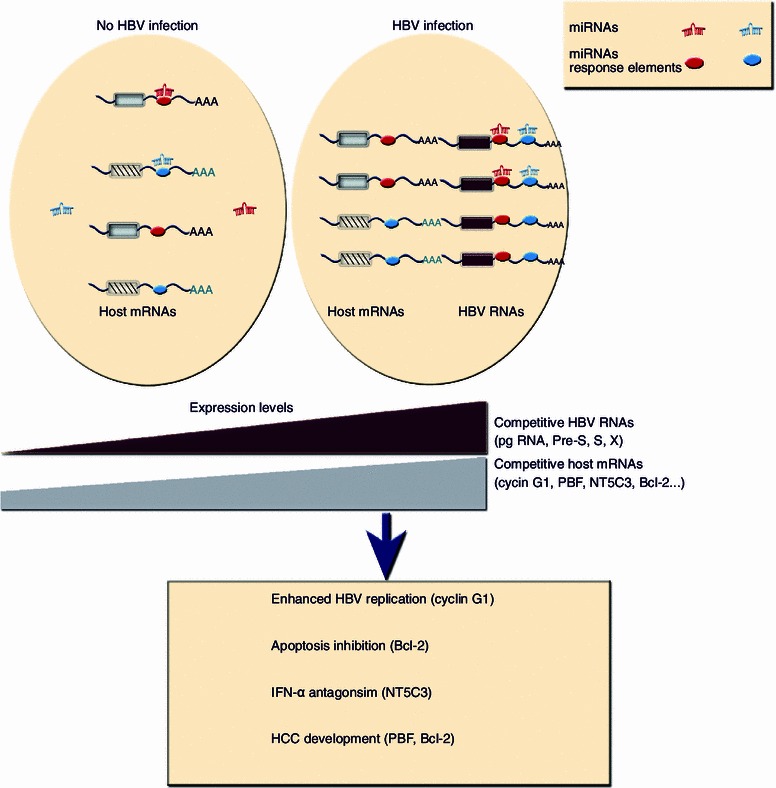Figure 2.

Schematic figure of how cvhRNA networks may mediate viral replication, infection, and the development of HCC during HBV infection. In hepatocytes, miR-122 effectively suppresses the expression of its target genes (cyclin G1, PBF, and NT5C3) at the post-transcriptional level by binding to the miRNA response element within the 3′-UTR of target mRNAs. During HBV infection, high levels of viral RNAs harboring a miR-122 response element in their 3′-UTR competitively sponge and efficiently sequester cellular miR-122, thus blocking the binding of miR-122 to its host target mRNAs. In this manner, viral RNAs de-repress and rescue the expression of host target mRNAs. Similarly, HBV RNAs positively cross-regulate Bcl-2 expression through shared miR-15a/16 response elements. The dose effect between competitive HBV RNAs and host mRNAs is shown. In the networks consisting of four viral RNAs (pgRNA, pre-S, S, and X mRNAs) and four host mRNAs (cyclin G1, PBF, NT5C3, and Bcl-2), elevated expression of de-repressed host genes contributes to enhanced HBV replication, persistent viral infection, and HCC development
